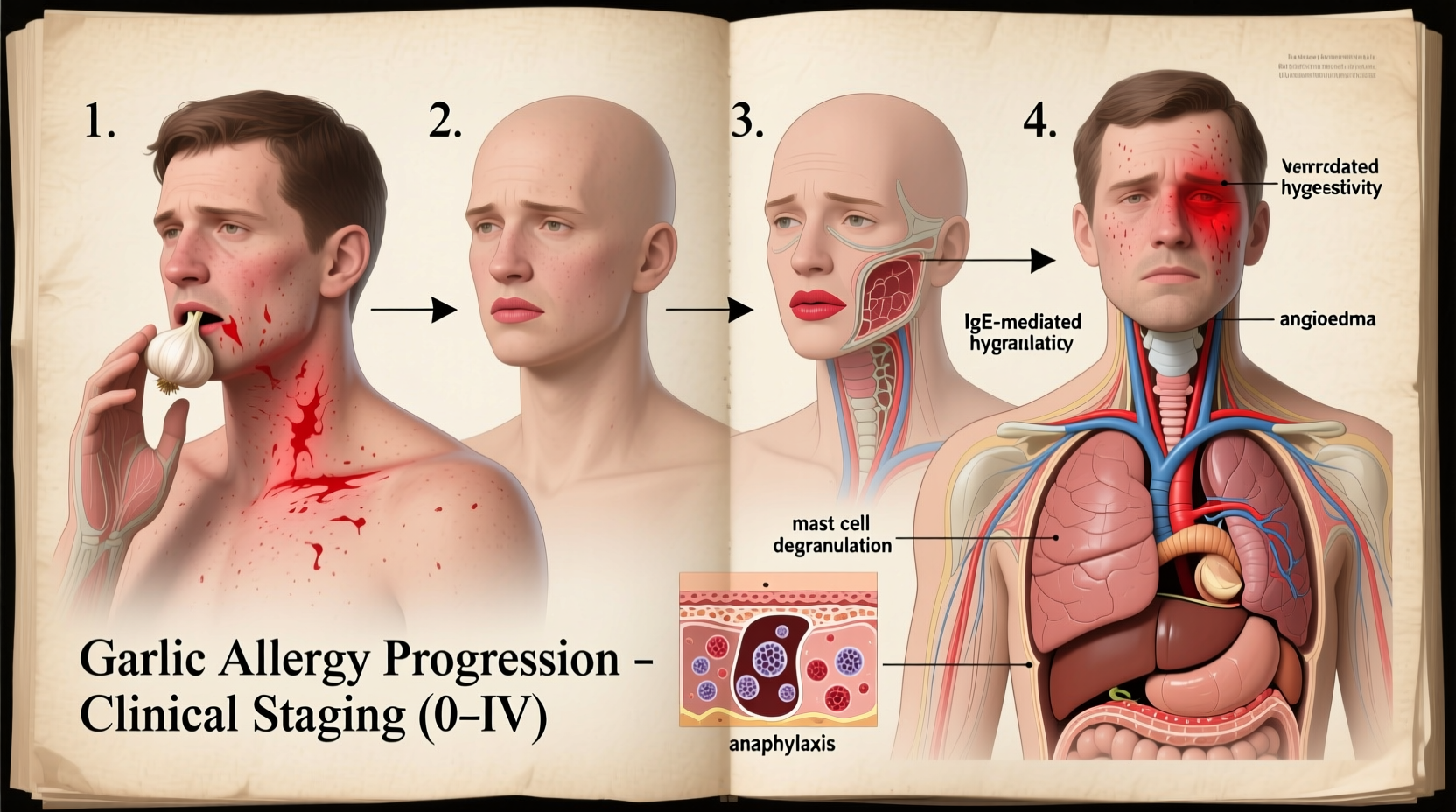If you've experienced unusual symptoms after eating garlic—from skin irritation to breathing difficulties—you need clear, medically-accurate information to protect your health. This guide explains exactly what happens during a garlic allergy reaction, how to distinguish it from simple intolerance, and most importantly, what steps to take for proper diagnosis and management. You'll learn practical strategies used by healthcare professionals to identify triggers and prevent dangerous episodes.
Garlic Allergy vs. Intolerance: Critical Differences
Understanding whether you're dealing with a true allergy or intolerance is essential for proper treatment. A genuine garlic allergy involves your immune system mistakenly identifying garlic compounds as threats, triggering histamine release and potentially severe reactions. Intolerance, meanwhile, creates digestive discomfort without immune system involvement.
| Characteristic | Allergic Reaction | Intolerance |
|---|---|---|
| Immune System Involvement | Yes (IgE-mediated) | No |
| Onset Time | Minutes to 2 hours | Hours to days |
| Common Symptoms | Hives, swelling, breathing issues | Bloating, diarrhea, gas |
| Severity Progression | Can worsen with each exposure | Generally consistent |
| Medical Testing | Skin prick or blood tests available | No specific test |
Symptom Timeline: What Happens During a Reaction
When someone with a garlic allergy consumes or handles garlic, their body follows a predictable reaction sequence:
- Exposure (0-15 minutes): Garlic compounds enter the body through ingestion, inhalation, or skin contact
- Initial Response (5-30 minutes): Histamine release causes itching, tingling, or hives at contact points
- Systemic Spread (15-60 minutes): Symptoms may progress to swelling, digestive issues, or respiratory problems
- Critical Window (30-120 minutes): Severe reactions can develop into anaphylaxis requiring immediate epinephrine
- Late Phase (24-72 hours): Some experience prolonged symptoms like fatigue or lingering skin reactions
According to the American College of Allergy, Asthma, and Immunology, approximately 30% of food allergy reactions show biphasic patterns where symptoms temporarily improve then return more severely. This makes continuous monitoring essential even after initial symptoms seem to resolve.

How Common Is Garlic Allergy Really?
While garlic ranks among the top 20 most consumed spices globally, documented allergies remain relatively rare. Research published in Allergy, Asthma & Clinical Immunology indicates that true garlic allergy affects approximately 0.5-1% of the general population. However, certain groups face higher risks:
- Individuals with existing pollen-food syndrome (particularly mugwort pollen allergy)
- People with latex-fruit syndrome due to cross-reactivity
- Those working regularly with raw garlic (chefs, food processors)
- Individuals with compromised immune systems
Getting an Accurate Diagnosis
Self-diagnosis of garlic allergy can be dangerous. The European Academy of Allergy and Clinical Immunology recommends professional testing when:
- Symptoms occur consistently after garlic exposure
- Reactions involve multiple body systems (skin + respiratory)
- Previous reaction required emergency treatment
Board-certified allergists typically use these diagnostic methods:
Skin Prick Testing
Small amounts of garlic extract are introduced to your skin. A positive reaction (redness, swelling) within 15 minutes suggests allergy. This test has approximately 85% accuracy for garlic allergies according to NIH research.
Specific IgE Blood Test
Measures garlic-specific antibodies in your blood. Results take 3-5 days but provide quantitative data about reaction severity potential.
Oral Food Challenge
Conducted under strict medical supervision, this gold-standard test involves consuming gradually increasing garlic amounts while monitoring for reactions.
Effective Management Strategies
Once diagnosed, proper management prevents dangerous reactions while maintaining quality of life:
Complete Avoidance Protocol
Read all food labels carefully—garlic appears in unexpected products like:
- Processed meats and sausages
- Ready-made sauces and dressings
- Some pharmaceuticals and supplements
- Seasoned salts and spice blends
Emergency Preparedness
If you have moderate to severe reactions:
- Carry epinephrine auto-injectors at all times
- Wear medical alert jewelry identifying your allergy
- Develop an emergency action plan with your allergist
Safe Flavor Alternatives
Replace garlic's flavor profile without risk:
- For savory dishes: Asafoetida (use sparingly), celery seed, or roasted onion powder
- For Mediterranean flavors: Lemon zest with oregano or basil
- For umami depth: Mushroom powder or nutritional yeast
When to Seek Immediate Medical Help
Recognize these anaphylaxis warning signs requiring emergency treatment:
- Difficulty breathing or wheezing
- Swelling of lips, tongue, or throat
- Sudden drop in blood pressure (dizziness, fainting)
- Rapid pulse with skin flushing or paleness
- Feeling of impending doom
According to the CDC's Food Allergy Management Guidelines, using epinephrine immediately upon recognizing severe symptoms significantly improves outcomes. Delaying treatment increases the risk of biphasic reactions and complications.
Living Well With Garlic Allergy
With proper management, most people with garlic allergies maintain normal lives. Key strategies include:
- Communicating clearly with restaurant staff using chef cards
- Carrying safe snacks when traveling
- Joining support groups like Food Allergy Research & Education
- Regular follow-ups with your allergist to monitor potential tolerance changes











 浙公网安备
33010002000092号
浙公网安备
33010002000092号 浙B2-20120091-4
浙B2-20120091-4